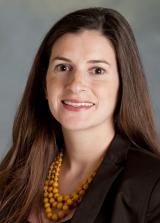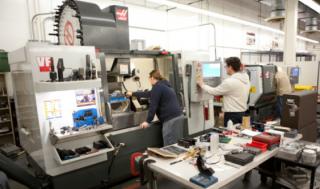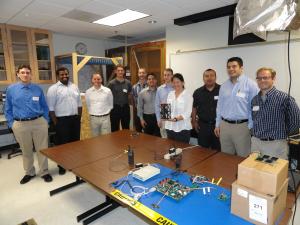Faculty: Incorporating embedded systems into the curriculum
 Whether you know it or not, embedded systems are everywhere in our environment, from the controllers in washing machines and on-board computers in cars to mobile phones and tablets, to name just a few examples. And now that they are becoming ubiquitous, the need is growing rapidly for professionals trained in the technology.
Whether you know it or not, embedded systems are everywhere in our environment, from the controllers in washing machines and on-board computers in cars to mobile phones and tablets, to name just a few examples. And now that they are becoming ubiquitous, the need is growing rapidly for professionals trained in the technology.
“There is data showing how many embedded processors are being sold versus general purpose processors, and the number is exponentially higher for embedded processors,” explains Ani Nahapetian, assistant professor of computer science. “It’s an area where there is growth commercially, but there will also be a need for trained students to work in that area.”
A recent grant from Intel Embedded will help CECS produce graduates with expertise in the field. The grant, which includes a cash award as well as ten Intel Atom cores, grew out of a research and education conference Nahapetian attended for Intel and its academic partners, where she submitted a white paper and had many conversations with their staff. It is designed to provide the resources for students and Nahapetian to develop interesting embedded computing activities over the course of a year that can then make their way into the classroom and eventually into student research projects. Fortuitously, it coincides with the debut of a graduate-level mobile computing course, which Nahapetian designed and is teaching, and plans call for incorporating the Atom technology into the course the next time it is offered. (One student isn’t waiting, however, and has already begun working on a project with the Atom processor.)
“There are a lot of resources on campus, and the best resource is our students, who are quite capable and very open to learning,” she says. “If there are interesting projects in cutting-edge areas, it’s a win-win for everybody. Students learn and make connections and hopefully get hired, but CSUN also wins, and industry wins because they get our output in the form of research products and well-trained students. And we all plan to grow this interaction and leverage it for future students.”
A message from the Dean
February 6, 2014Industry partnerships – HAAS
February 6, 2014Industry Partnerships – Jet Propulsion Laboratory
February 6, 2014
Leave a reply Cancel reply
-
Giving: Alumnus and Professor gives back to students and faculty
January 20, 2021 -
IAB Highlight – Chris Erickson
February 6, 2014




